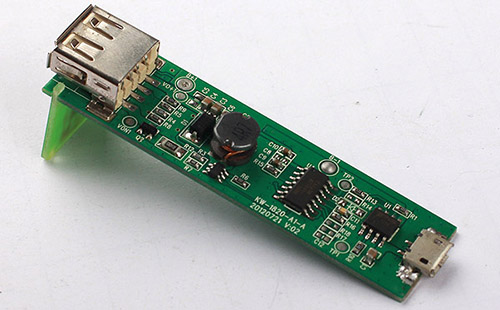About us
FASTPCBA Co.,Ltd
-
 Building 1, Senyang Electronic Technology Park, Guangming High-tech Park, Yutang Street, Guangming District, Shenzhen City.
Building 1, Senyang Electronic Technology Park, Guangming High-tech Park, Yutang Street, Guangming District, Shenzhen City.
-
 F:86-13418481618
F:86-13418481618
-
 pcba13@fastpcba.cn
pcba13@fastpcba.cn
 date:2019-08-08 15:10:45
date:2019-08-08 15:10:45
During Pcb manufacturing process, causes and precautions for poor welding
First, the bridging connection

During pcb manufacturing process, bridging connection is a conductive path formed by soldering two or more adjacent pads in contact with each other. The cause of bridging connection is mostly due to excessive solder or severe sag after solder printing, or the size of the substrate soldering area is over the tolerance, SMD placement offset, etc., SOP, QFP circuit tends to miniaturization stage, bridging connection causes electrical short circuit and affects product usage.
Precautions:
1. The size of the substrate soldering area should meet the design requirements, and the mounting position of the SMD should be within the specified range.
2.During pcb manufacturing process, to prevent solder paste printing bad collapse, substrate wiring gap, solder resist coating accuracy, must meet the requirements.
3. Develop appropriate welding technics parameters to prevent mechanical vibration of the conveyor belt.
Second, the solder ball
The solder ball refers to the during pcb manufacturing welding process. The solder forms scattered balls at unnecessary positions on the board due to splashing etc. The generation of solder balls often occurs due to rapid heating during soldering and scattering of solder, and is also associated with solder misalignment, sag, contamination etc.
Precautions:
1. During pcb manufacturing process, the corresponding preheating technics is carried out according to the type of welding.
2. Welding according to the set heating technics to avoid excessive hurry failure in welding heating.
3. The using of solder paste should meet the requirements, no problems such as poor moisture absorption.
Third, the crack
When the soldering PCB is just separated from the soldering area, due to the difference in thermal expansion between the solder and the bonded member, under the action of rapid cooling or rapid heat, the SMD may be slightly cracked due to the influence of solidification stress or shrinkage stress. After soldering, the PCB must also reduce the impact stress and bending stress on the SMD during cutting and transportation.
Precautions:
1. It is necessary to consider the difference in thermal expansion and set correct heating conditions and cooling conditions when designing surface mount products .
2. Using a solder with good ductility.
Fourth, Icicles
During pcb manufacturing process, the Icicles is the tip or burr of the solder joint. The reason is that the solder is too much, the flux is less, the heating time is too long, and the soldering time is too long, resulting in improper soldering angle of the soldering iron.
Precautions:
1. Select the appropriate flux to control the amount of solder.
2. Set the preheating temperature according to the PCB size, whether the multi-layer board, the number of components, with or without components.
Fifth, the issue of the film (Manhattan phenomenon)
During the pcb manufacturing process, the Manhattan phenomenon refers to the phenomenon in which one end of a rectangular chip component is soldered to a pad and the other end is warped. The main reason for this phenomenon is that the two ends of the element are unevenly heated, the heating direction is not balanced, the solder paste is melted successively and the size of the pad, the shape of the SMD itself, and the wettability.
Precaution:
1. adopts a reasonable preheating method to achieve uniform heating during welding during pcb manufacturing process.
2. Reduce the surface tension generated on the SMD end when the solder melts.
3. The size of the length of the substrate soldering area should be set properly, and the printed thickness of the solder should be set correctly.
Six, poor wetting
During pcb manufacturing process, the soldering and soldering of the substrate during the soldering process does not cause metal-to-metal reaction after infiltration, resulting in solder leakage or less soldering failure. The reason is mostly caused by contamination of the surface of the pad, or attached by solder resist, or by the formation of a metal compound layer on the surface of the bond.
Precaution:
1. Perform appropriate anti-fouling measures on the surface of the substrate and the surface of the component in addition to the proper soldering process.
2. The grinding pcb manufacturing process selects the appropriate solder and sets a reasonable soldering temperature and time.
The above is about the causes and precautions of SMT surface mount soldering defects, I believe you have some understanding. Due to the cumbersome process of SMT welding, some welding problems can not be avoided in the work. We should learn to analyze the causes of each problem, and seek solutions, precautions, and reduce welding defects.
 Building 1, Senyang Electronic Technology Park, Guangming High-tech Park, Yutang Street, Guangming District, Shenzhen City.
Building 1, Senyang Electronic Technology Park, Guangming High-tech Park, Yutang Street, Guangming District, Shenzhen City.
 F:86-13418481618
F:86-13418481618
 pcba13@fastpcba.cn
pcba13@fastpcba.cn